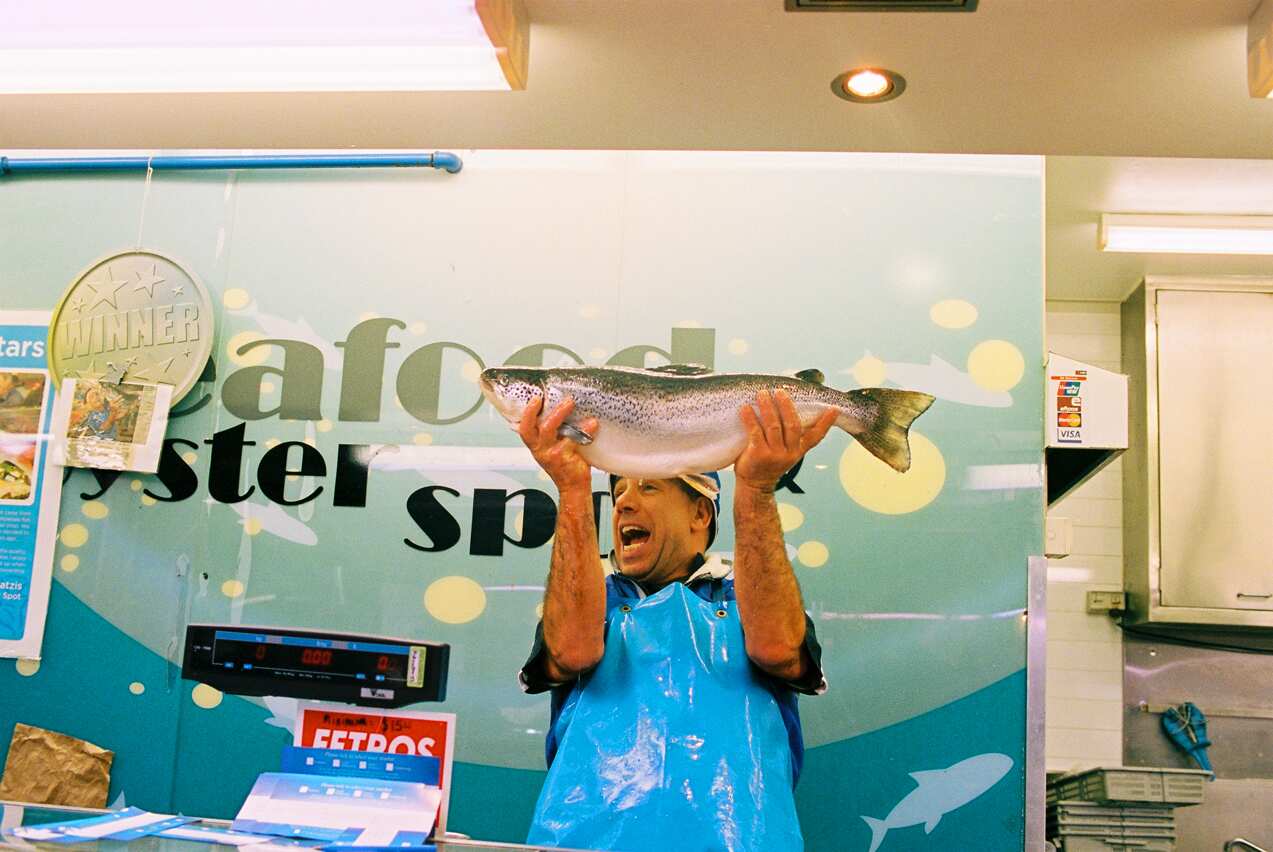The clock has barely ticked past breakfast hour, but that’s no deterrent to the oyster-wielding Yianni Yiannatzis, the larger-than-life personality who brings some 300-dozen freshly shucked oysters to the Queen Victoria Market crowd on any given Saturday morning. “You don’t want an oyster? Then take a lemon!” he shouts with a grin, passing handfuls of punchy citrus over the counter as his long-suffering wife, Maria, shoulders him out, keen for a chat of her own. In 2000, the couple opened the Seafood and Oyster Spot, now one of the market’s most attention-grabbing stalls. “I love talking with people,” Yianni says. “Here, we are like family.”
The comment is no platitude. The largest open-air food market in the Southern Hemisphere has changed little since opening in 1878, when its impressive Gold Rush-era exterior became a charismatic focus for a fast-developing Melbourne. Fast forward more than 135 years, having survived two world wars, the Great Depression and the birth of the supermarket, and its drawing power and sense of community are as strong as ever.
The secret is the people as much as the products. Just up from Yianni, father-and-son team Wayne and Brett Chitty have become the third and fourth generations of their family to man the stall now known as Happy Tuna Seafoods. The space has been in the Chitty family for nearly a century. Originally rabbit packers, the change to seafood arose in the 1990s when introduced viruses crippled the wild rabbit farming industry. Today, even on a quiet mid-week morning, customers line up two-deep to get their hands on glistening tuna or nine-kilo king crabs. While the Chittys might be too busy to talk, little could stop Dianne Louca of Dianne’s Delights. A one-woman antipasti powerhouse, she was the first to introduce handmade dolmades to the market. “People thought they wouldn’t sell,” she says of the other traders, who were predominantly Greek. “I started making 20, now I make between 3000 and 4000 a week!” That’s around two tonnes of grape leaves (sourced from Mildura) rolled each year.
While the Chittys might be too busy to talk, little could stop Dianne Louca of Dianne’s Delights. A one-woman antipasti powerhouse, she was the first to introduce handmade dolmades to the market. “People thought they wouldn’t sell,” she says of the other traders, who were predominantly Greek. “I started making 20, now I make between 3000 and 4000 a week!” That’s around two tonnes of grape leaves (sourced from Mildura) rolled each year.

Source: Jackson Eaton
Her exuberance is typical of the Deli Hall, formerly known as Dairy Produce Hall, which was built in 1929 to house the state’s best dairy. In here, it’s freezing, even on the hottest summer day, courtesy of the marble counters, art-deco stone facade and south-facing windows, which ensured cool dairy products pre-refrigeration.
We exit the hall with a wave to Julie Langtry at famed The French Shop, passing a nod in the direction of Tina, Steven and Faye Konstantinidis, mother, son and daughter respectively, who each run delicatessens with unique specialties facing each other in the market centre. This sense of family repeats again and again, not least out in the fruit and vegetable aisles. At Tomato
City, 87-year-old Jo Pontelandolfo has been working his stall for nearly 70 years, lording over boxes of ox heart, San Marzano and sweet cherry tomatoes. His son, John, stands beside him, prodding his Italian-born father to explain his love for a market where he has spent the better part of his life. “Nationalities have changed,” he muses, noting the changing influx from Italians and Greeks, to Turkish, Chinese and Vietnamese.
“But we have had good people all along.”
Open Tuesdays and Thursdays, 6am-2pm; Friday, 6am-5pm; Saturday, 6am-3pm; Sunday, 9am-4pm.
Recipes
Italian ricotta cake
Light, citrus cheesecakes are a common sight across Italy, where they are made with ricotta in place of cream cheese. The case also differs, made with sweet pastry instead of biscuit crumbs.
Italian ricotta cake
Light, citrus cheesecakes are a common sight across Italy, where they are made with ricotta in place of cream cheese. The case also differs, made with sweet pastry instead of biscuit crumbs.
This recipe is inspired by the jam doughnuts available at the Queen Victoria Markets in Melbourne. The recipe calls for cake flour, which has a lower gluten content, giving the finished product a finer crumb.
This recipe for dolmades is inspired by Melbourne's Queen Victoria Market, where a large proportion of traders are of Greek origin.
Photography Jackon Eaton.
As seen in Feast magazine, April 2014, Issue 30.
Share
SBS Food is a 24/7 foodie channel for all Australians, with a focus on simple, authentic and everyday food inspiration from cultures everywhere. NSW stream only. Read more about SBS Food

